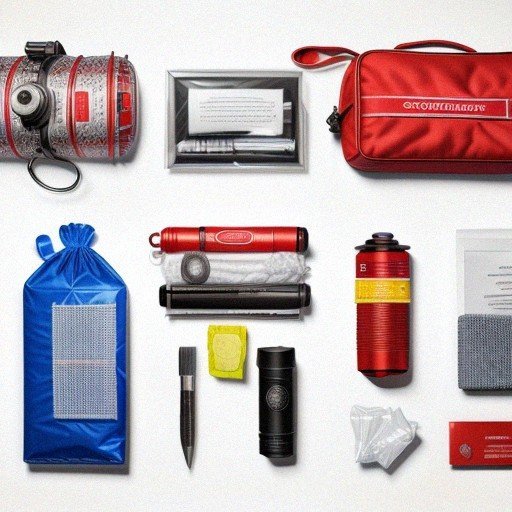How Many Emergency Funds Should I Have? Expert Advice on Building Your Financial Safety Net
As responsible adults, we all know the importance of having an emergency fund. It’s a safety net that can provide us with financial security during unexpected events like job loss, medical emergencies, or natural disasters. But how many emergency funds should we have? Is one enough, or do we need more? In this article, we will explore the factors that influence the size of an emergency fund and the methods to calculate it.
Understanding the importance of an emergency fund is the first step towards building one. It’s a fund that can help us cover our expenses during tough times, without having to rely on credit cards or loans. However, the size of the fund depends on various factors, such as our monthly expenses, the number of dependents, and job security. Moreover, it’s essential to keep our emergency fund in a safe and easily accessible place, like a savings account.
How many emergency funds should you have? The answer depends on your personal situation. For instance, if you’re a freelancer or self-employed, you might need a larger emergency fund than someone with a stable job. Additionally, if you have dependents or a mortgage, you might need a bigger fund to cover your expenses. In this article, we will discuss the factors that influence the size of an emergency fund and the methods to calculate it, so that you can make an informed decision.
Key Takeaways
- The size of your emergency fund depends on your personal situation, such as your monthly expenses, job security, and number of dependents.
- It’s important to keep your emergency fund in a safe and easily accessible place, like a savings account.
- Calculating your emergency fund using the right methods can help you determine the right amount to save.

Understanding the Importance of an Emergency Fund
Having an emergency fund is an essential part of financial planning. It serves as a financial safety net that can help us weather unexpected expenses, job loss, layoff, or surprise medical bills without having to rely on credit cards, loans, or other expensive forms of borrowing.
An emergency fund is a cash reserve that’s specifically set aside for unplanned expenses or financial emergencies. It can be used to cover a wide range of expenses, such as car repairs, home repairs, medical bills, or a loss of income.
Without an emergency fund, we may be forced to dip into our retirement savings, sell assets, or take on high-interest debt to cover unexpected expenses. This can have long-term financial consequences and set us back on our financial goals.
According to a Bankrate survey, released on July 21, 2021, only 51% of Americans have less than three months’ of expenses covered in their emergency fund, including 25% who don’t even have any emergency savings at all. This highlights the importance of having an emergency fund and the need to prioritize building one.
An emergency fund can provide us with peace of mind, knowing that we have a financial safety net in place to help us weather unexpected expenses or financial emergencies. It can also help us avoid the stress and uncertainty that comes with not having enough savings to cover unexpected expenses.
In summary, having an emergency fund is an essential part of financial planning. It can help us weather unexpected expenses, job loss, layoff, or surprise medical bills without having to rely on credit cards, loans, or other expensive forms of borrowing. It can provide us with peace of mind and help us avoid the stress and uncertainty that comes with not having enough savings to cover unexpected expenses.
How Many Emergency Funds Should You Have
When it comes to emergency funds, one question that often arises is “how many emergency funds should I have?” The answer, unfortunately, is not straightforward. It depends on various factors such as your expenses, income, savings, and the level of financial security you want to maintain.
A common rule of thumb is to save three to six months’ worth of expenses in an emergency fund. This means that if your monthly expenses are $3,000, you should aim to save between $9,000 and $18,000. This amount should be enough to cover your essential expenses such as rent or mortgage payments, utilities, groceries, and debt payments, in case of a job loss or other unexpected financial emergencies.
However, some financial experts suggest having more than one emergency fund. For instance, you could have one emergency fund for short-term emergencies such as car repairs or medical bills, and another one for long-term emergencies such as a job loss or a major medical event. This way, you can allocate your funds accordingly and avoid draining your emergency fund unnecessarily.
Another approach is to save six months of expenses in an emergency fund. This provides a balance between security and flexibility. It offers much more breathing room than three months of living expenses. At the same time, it doesn’t require too much of your income to be saved.
On the other hand, some people may prefer to save 12 months of expenses in an emergency fund. This is especially true if they have a high-risk job or a lot of financial responsibilities. However, this approach may not be feasible for everyone, as it requires a significant amount of savings and may not be a realistic goal for those with lower incomes.
Ultimately, the number of emergency funds you should have depends on your individual circumstances and financial goals. It’s important to assess your expenses, income, and savings, and determine the level of financial security you want to maintain. From there, you can decide how many emergency funds are necessary and allocate your savings accordingly.
Factors Influencing the Size of Emergency Funds
Determining the size of our emergency fund is a crucial step in financial planning. The amount we need to save depends on several factors, including our monthly living expenses, risk factors, and financial obligations. Here are some factors that can help us determine the size of our emergency fund:
Monthly Living Expenses
The first factor we need to consider is our monthly living expenses. This includes our rent or mortgage payments, bills, groceries, utilities, transportation, child care, health care, and insurance premiums. We need to calculate the total amount of money we spend each month and multiply it by the number of months we want to save for. Most financial experts recommend saving at least three to six months’ worth of living expenses.
Financial Obligations
Apart from our monthly living expenses, we also need to consider our financial obligations. This includes our loan payments, medical bills, and other outstanding debts. If we have significant financial obligations, we may need to save more than six months’ worth of living expenses.
Risk Factors
Another factor we need to consider is our risk factors. If we have a stable job and a good health condition, we may not need to save as much as someone who has a high-risk job or a chronic medical condition. If we have dependents or a single income source, we may need to save more to protect our family in case of an emergency.
Other Factors
There are other factors we need to consider when determining the size of our emergency fund. For example, if we live in an area prone to natural disasters, we may need to save more to cover potential evacuation costs or property damage. Additionally, if we have a high deductible health insurance plan, we may need to save more to cover medical expenses.
In conclusion, the size of our emergency fund depends on several factors, including our monthly living expenses, financial obligations, risk factors, and other factors. By considering these factors, we can determine the appropriate amount we need to save to protect ourselves in case of an emergency.

Methods to Calculate Your Emergency Fund
Calculating your emergency fund can seem daunting, but it’s essential to determine how much you need to save to be prepared for unexpected expenses. Here are some methods to calculate your emergency fund:
Method 1: Determine Your Monthly Expenses
The first step to calculating your emergency fund is to determine your monthly expenses. This includes rent or mortgage payments, utilities, food, transportation, and any other necessary expenses. Add up all of your monthly expenses to determine your total monthly cost of living.
Method 2: Multiply Your Monthly Expenses
Once you have determined your monthly expenses, you can calculate your emergency fund by multiplying your monthly expenses by the number of months you want to save for. Financial experts generally recommend saving three to six months’ worth of expenses for emergencies. For example, if your monthly expenses are $3,000, you should aim to save between $9,000 and $18,000.
Method 3: Use an Emergency Fund Calculator
If you prefer a more precise calculation, you can use an emergency fund calculator. These calculators take into account your monthly expenses and other factors such as your income, debt, and savings goals to determine how much you should save for emergencies.
Method 4: Consider Your Personal Situation
While financial experts generally recommend saving three to six months’ worth of expenses, your personal situation may require a different approach. For example, if you have a high-risk job or a medical condition that requires expensive treatments, you may want to save more. On the other hand, if you have a stable job and a supportive network of family and friends, you may be comfortable with a smaller emergency fund.
In conclusion, calculating your emergency fund is an important step in financial planning. By determining your monthly expenses, multiplying your expenses, using an emergency fund calculator, and considering your personal situation, you can determine how much you should save for emergencies.
Choosing the Right Place to Keep Your Emergency Fund
When it comes to choosing the right place to keep your emergency fund, there are a few factors to consider. We recommend that you choose an account that is both safe and accessible, while also offering a competitive interest rate.
One option is a savings account. Savings accounts are FDIC-insured, which means that your money is protected up to $250,000 per depositor, per insured bank. They are also highly liquid, which means that you can access your funds quickly and easily in case of an emergency.
Another option is a high-yield savings account. These accounts typically offer a higher interest rate than traditional savings accounts, which means that your money can grow faster over time. However, it’s important to note that some high-yield savings accounts may have more restrictions or fees than traditional savings accounts, so be sure to read the terms and conditions carefully before opening an account.
Money market accounts are another option for keeping your emergency fund. These accounts typically offer a higher interest rate than savings accounts, while still maintaining FDIC insurance. However, they may require a higher minimum balance or have more restrictions than savings accounts, so be sure to do your research before opening an account.
Overall, we recommend choosing an account that offers both safety and accessibility, while also providing a competitive interest rate. Whether you choose a savings account, high-yield savings account, or money market account, be sure to read the terms and conditions carefully before opening an account to ensure that it meets your needs.
Building Your Emergency Fund
When it comes to building your emergency fund, there are a few things to keep in mind. First, it’s important to determine how much you need to save. This will depend on a variety of factors, including your income, expenses, and the size of your family. A good rule of thumb is to aim for three to six months’ worth of living expenses.
To get started, take a look at your monthly expenses and determine how much you need to cover your basic needs. This includes things like rent or mortgage payments, utilities, groceries, and any other essential expenses. Once you have a rough estimate of your monthly expenses, you can multiply that number by three or six to determine your target emergency fund balance.
It’s also important to consider any outstanding debts you may have. If you have high-interest debt, such as credit card debt, it may be wise to focus on paying that off before building up your emergency fund. However, it’s still a good idea to have a small emergency fund of at least $1,000 to cover unexpected expenses while you’re paying down debt.
One way to make building your emergency fund easier is to set up automatic transfers from your checking account to a high-yield savings account. This way, you can gradually build up your emergency fund without even thinking about it. Many banks and credit unions offer high-yield savings accounts that offer better interest rates than traditional savings accounts. This can help your emergency fund grow faster and keep up with inflation.
Another important consideration is how you plan to use your emergency fund. While it’s important to have a liquid emergency fund that you can access quickly, you may also want to consider investing some of your emergency fund in a low-risk investment, such as a bond fund. This can help your emergency fund grow over time and keep up with inflation.
Ultimately, the key to building a strong emergency fund is to start small and stay consistent. Even if you can only save $50 or $100 a month, that’s better than nothing. And if you receive any windfalls, such as a tax refund or bonus, consider putting that money towards your emergency fund. By taking small steps and staying committed, you can build a strong emergency fund that will provide you with peace of mind and financial security.
Maintaining and Using Your Emergency Fund
Once you have established your emergency fund, it is important to maintain it properly. We should regularly review our expenses and adjust our emergency fund to ensure that it can cover at least three to six months of our basic living expenses. It is also important to keep our emergency fund in a separate account from our regular checking and savings accounts to avoid accidentally spending it.
When it comes to using our emergency fund, we should only use it for true emergencies, such as medical expenses, unexpected home repairs, or job loss. We should avoid using our emergency fund for non-essential expenses like vacations or entertainment. By using our emergency fund only for essential expenses, we can ensure that it will last as long as possible.
If we do need to use our emergency fund, we should try to only use what is necessary to cover the expense. We should not withdraw more than we need as this can deplete our emergency fund and leave us vulnerable in case of another emergency. We should also be aware of any penalties or taxes that may be associated with withdrawing from our emergency fund.
In some cases, it may be necessary to borrow money instead of using our emergency fund. We should consider all options, including borrowing from family or friends, taking out a loan, or using a credit card. However, we should be cautious when using credit cards as they can quickly accumulate high-interest debt.
Finally, it is important to remember that our emergency fund is just one part of our overall financial plan. We should continue to save for retirement and other long-term goals, even while maintaining our emergency fund. By having a stable job, health insurance, and unemployment benefits, we can also help to protect ourselves from financial emergencies. If we are unsure about how to best manage our emergency fund or our overall finances, we can consult with financial experts such as Fidelity or our local bank for advice.







